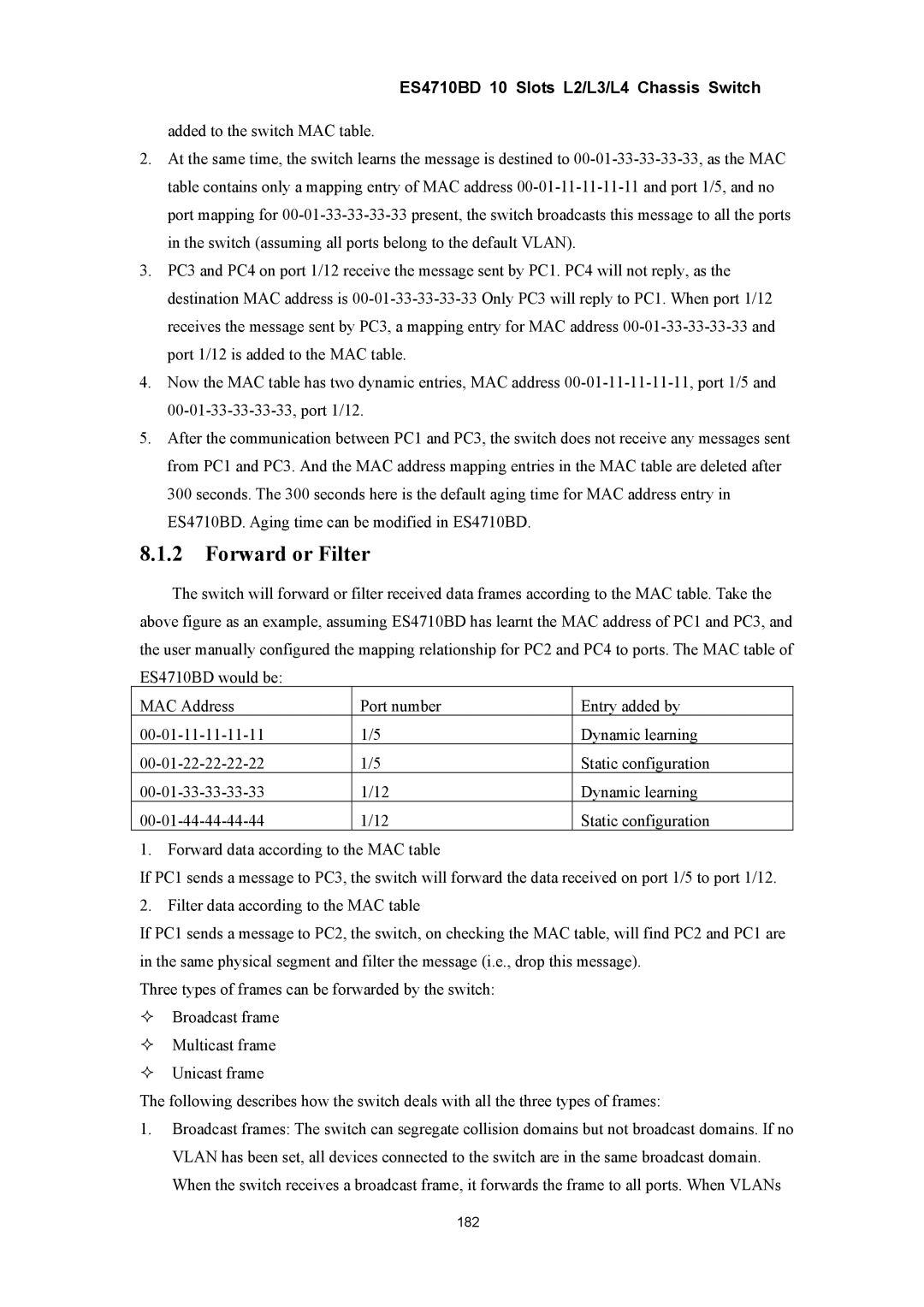ES4710BD 10 Slots L2/L3/L4 Chassis Switch
added to the switch MAC table.
2.At the same time, the switch learns the message is destined to
3.PC3 and PC4 on port 1/12 receive the message sent by PC1. PC4 will not reply, as the destination MAC address is
4.Now the MAC table has two dynamic entries, MAC address
5.After the communication between PC1 and PC3, the switch does not receive any messages sent from PC1 and PC3. And the MAC address mapping entries in the MAC table are deleted after 300 seconds. The 300 seconds here is the default aging time for MAC address entry in ES4710BD. Aging time can be modified in ES4710BD.
8.1.2Forward or Filter
The switch will forward or filter received data frames according to the MAC table. Take the above figure as an example, assuming ES4710BD has learnt the MAC address of PC1 and PC3, and the user manually configured the mapping relationship for PC2 and PC4 to ports. The MAC table of ES4710BD would be:
MAC Address | Port number | Entry added by |
1/5 | Dynamic learning | |
1/5 | Static configuration | |
1/12 | Dynamic learning | |
1/12 | Static configuration |
1. Forward data according to the MAC table
If PC1 sends a message to PC3, the switch will forward the data received on port 1/5 to port 1/12. 2. Filter data according to the MAC table
If PC1 sends a message to PC2, the switch, on checking the MAC table, will find PC2 and PC1 are in the same physical segment and filter the message (i.e., drop this message).
Three types of frames can be forwarded by the switch:
Broadcast frame
Multicast frame
Unicast frame
The following describes how the switch deals with all the three types of frames:
1.Broadcast frames: The switch can segregate collision domains but not broadcast domains. If no VLAN has been set, all devices connected to the switch are in the same broadcast domain. When the switch receives a broadcast frame, it forwards the frame to all ports. When VLANs
182
